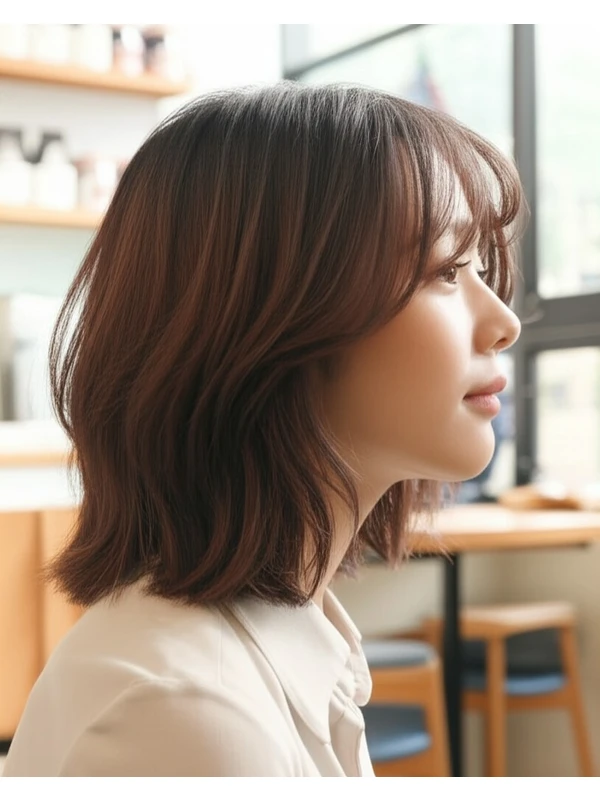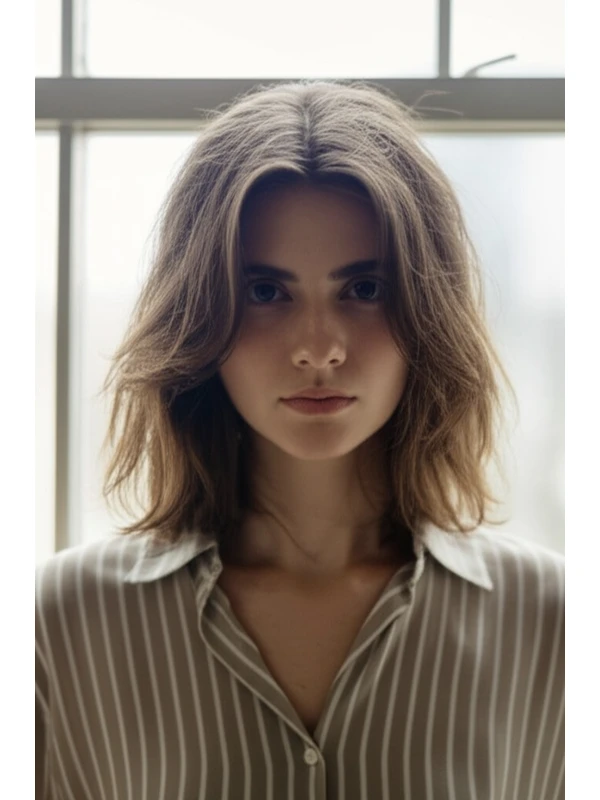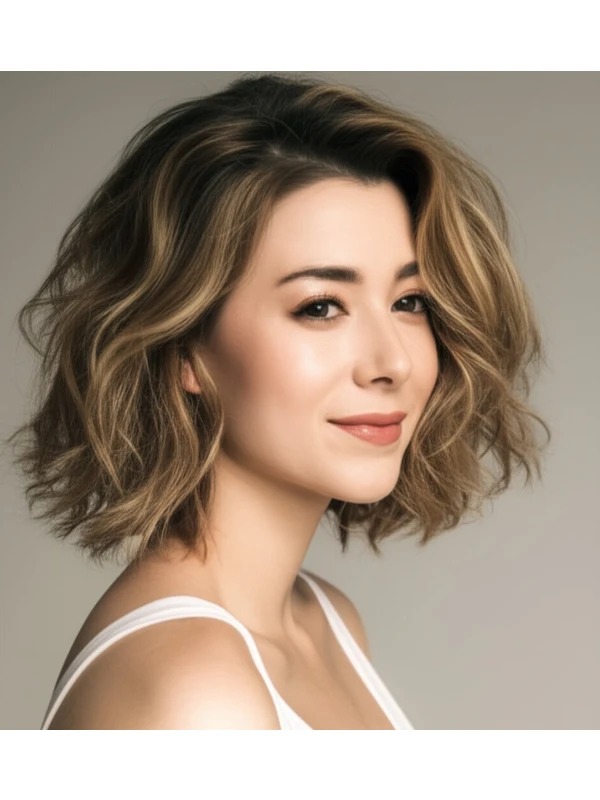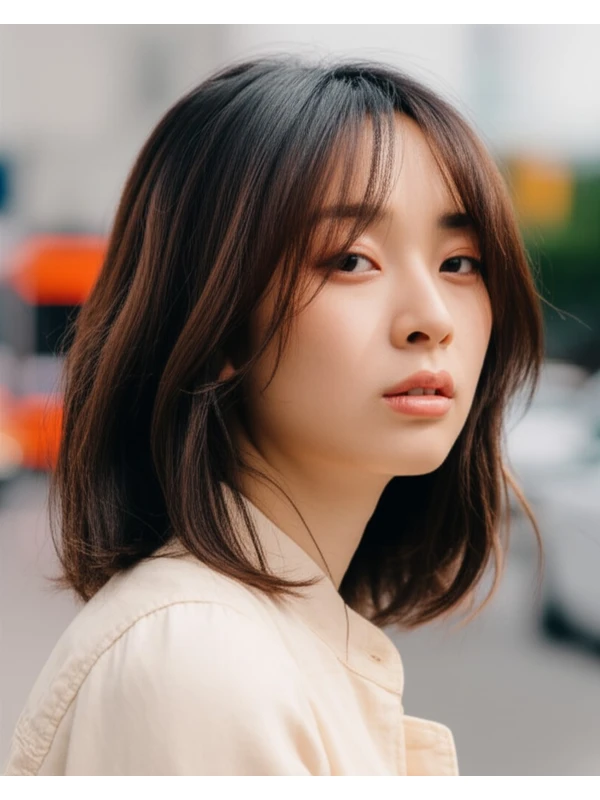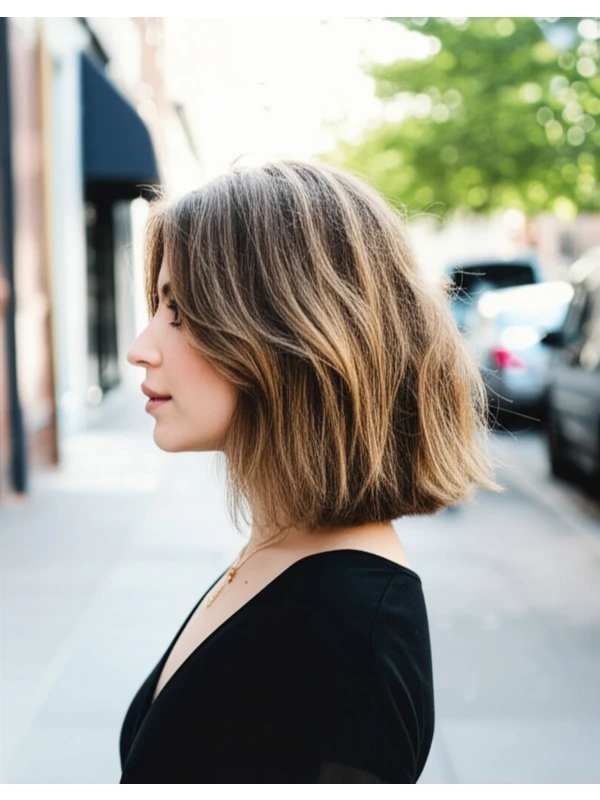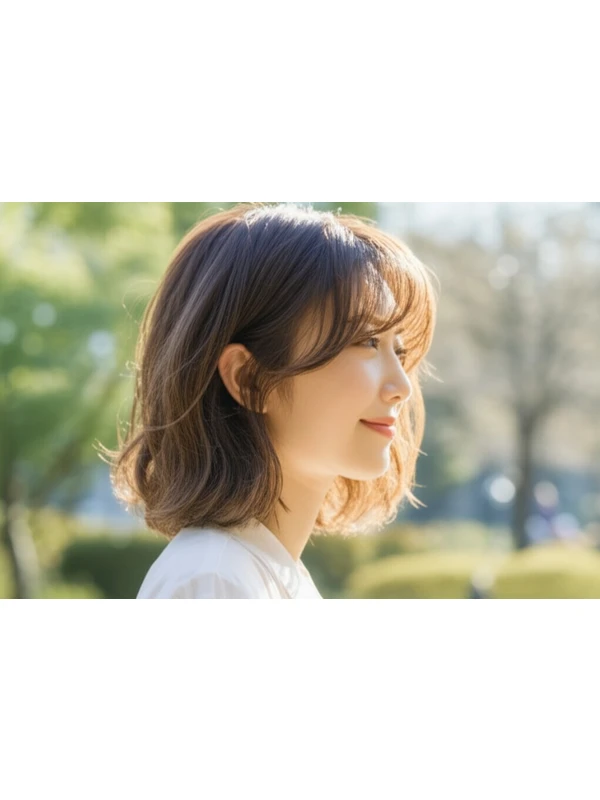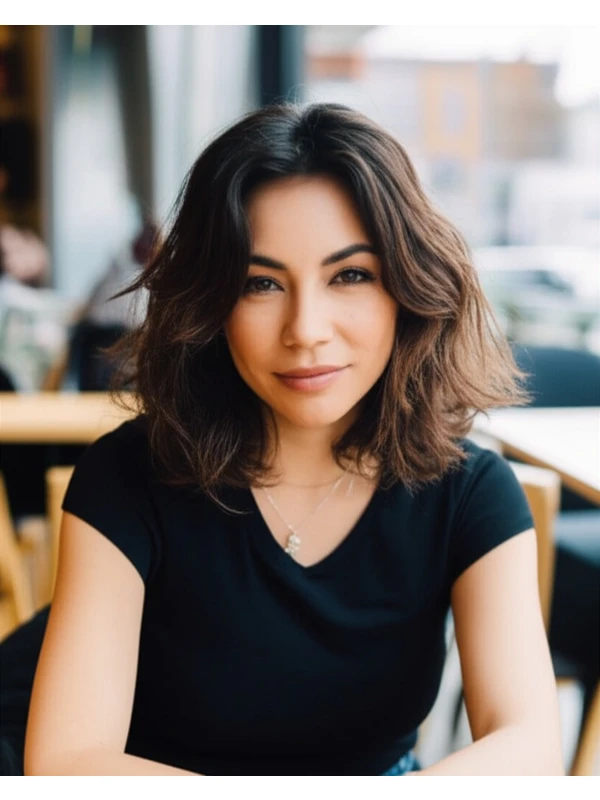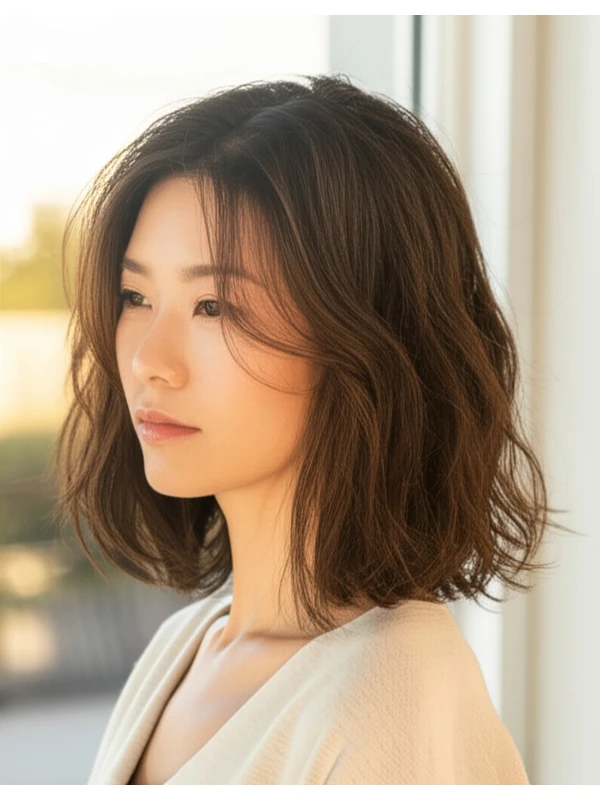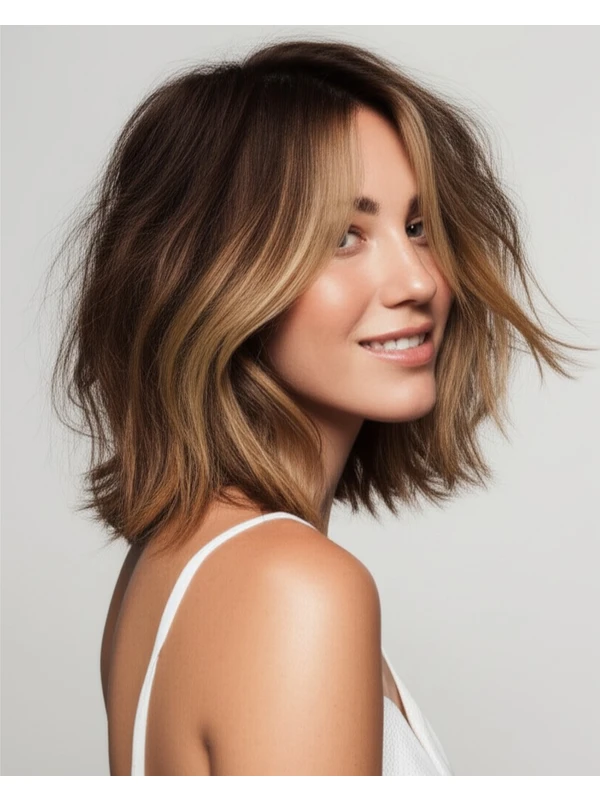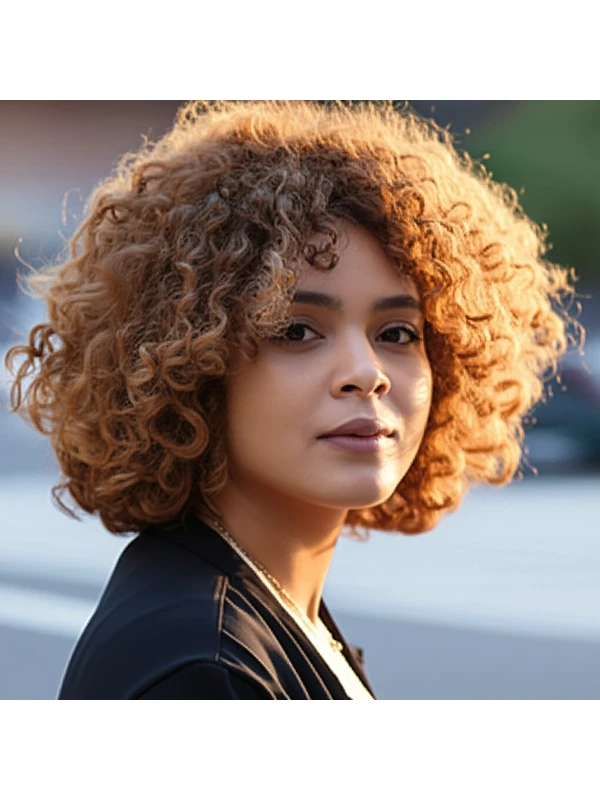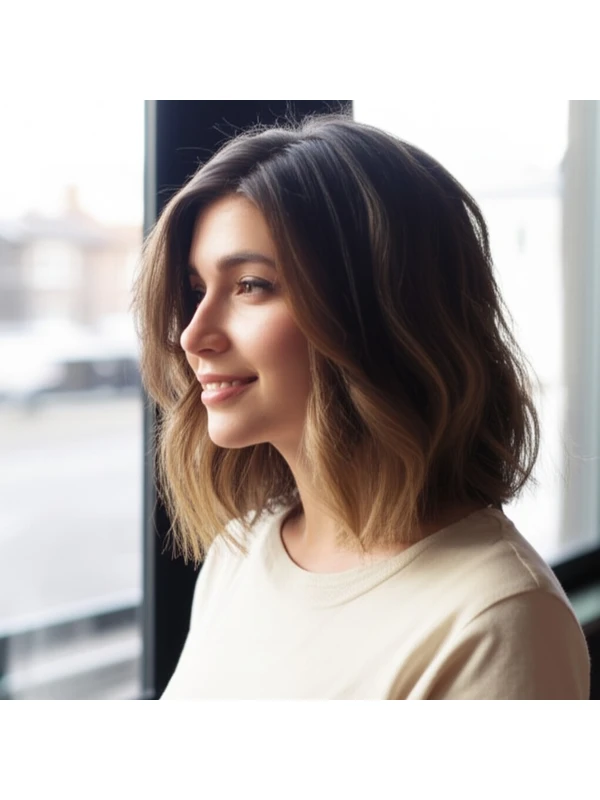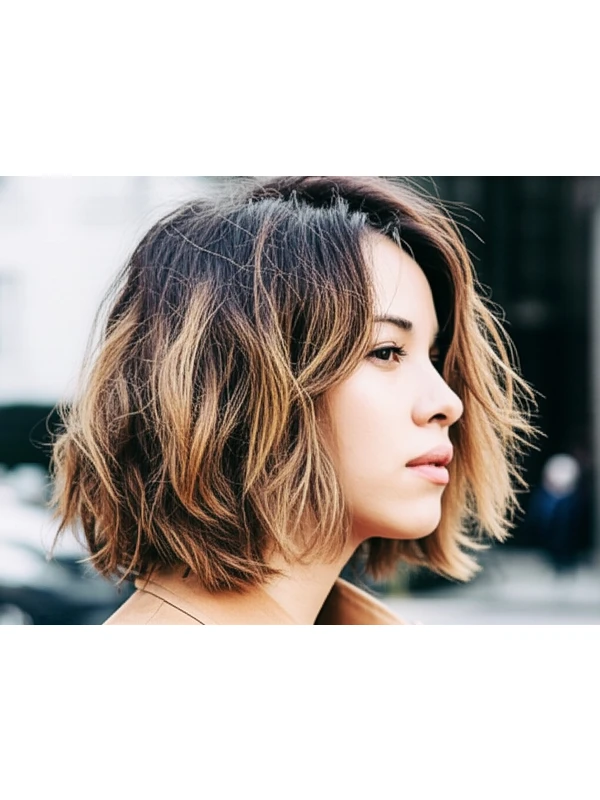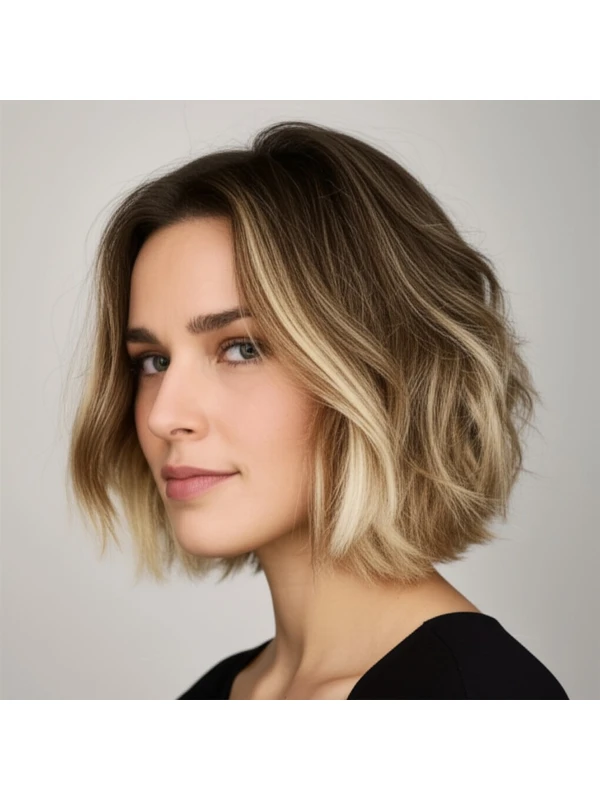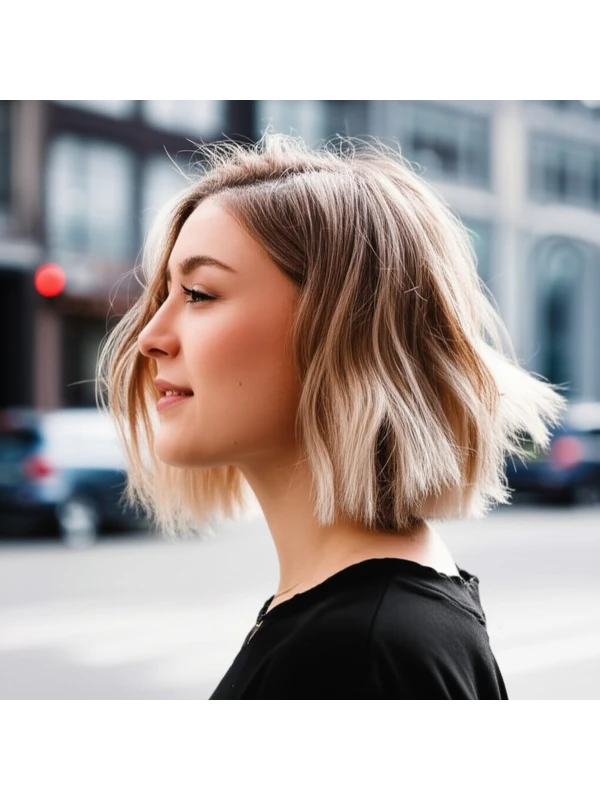#The Butterfly Lob: Effortless Style for Every Face & Hair Type
The butterfly lob is the haircut of the moment – and for good reason! It’s flattering, versatile, and feels effortlessly chic. But what exactly is a butterfly lob? Let's dive in to everything you need to know about this popular style.
#1) Background & Definition: What Makes a Butterfly Lob?
The "butterfly" name comes from the way the hair gently layers outward at the ends, resembling butterfly wings – soft and airy. It’s essentially a long bob (lob), typically hitting between your collarbone and just below your shoulders. Here's what defines it:
- Geometry: The key is subtle layering. While lobs are often one-length or have minimal shaping, the butterfly lob incorporates face-framing layers that start around the cheekbones and gradually blend into longer layers towards the ends. This creates movement and volume without looking overly choppy.
- Key Features: Softness, lightness, and a feeling of effortless flow. It’s not about sharp angles or blunt lines; it's about gentle shaping.
- Length Ranges: Typically 8-14 inches (20-35 cm) from the crown. The exact length will depend on your face shape and personal preference.
- Alternative Names: You might also hear this referred to as a "layered lob," a “soft lob,” or even a “whisper lob.”
#2) Face Shape Fit: Finding Your Flattering Angle
The butterfly lob is surprisingly versatile, but tailoring it to your face shape is key for maximum impact.
- Oval: Lucky you! This cut looks fantastic on oval faces. Keep the layers soft and subtle – avoid too much volume at the crown which can make an already balanced face look wider. A side part adds extra polish.
- Fringe Options: Curtain bangs or wispy, face-framing pieces work beautifully.
- Round: The butterfly lob's layering helps elongate a round face. Ask your stylist to focus layers around the cheekbones and jawline to slim these areas. Avoid blunt lines at the chin – they can emphasize roundness.
- Fringe Options: Side-swept bangs or soft, angled fringe are flattering. Full, straight-across bangs aren't ideal.
- Square: Softening is key! The layers in a butterfly lob will soften the angles of a square face. Ask for layers that blend seamlessly into each other to avoid harsh lines. A slightly longer length (closer to 14 inches) can further elongate your face.
- Fringe Options: Curtain bangs or soft, wispy fringe are great choices.
- Heart: The butterfly lob balances a heart-shaped face by adding width at the jawline and minimizing attention to the forehead. Avoid too much volume on top which could accentuate a wider forehead.
- Fringe Options: Side-swept bangs or soft, blended layers that frame the face are best.
- Diamond: This cut enhances diamond shapes by softening angles and adding balance. Layers around the cheekbones will highlight your features beautifully.
- Fringe Options: Curtain bangs, softly angled fringe, or no fringe at all work well.
- Oblong (Long): The butterfly lob can shorten a long face if styled with volume at the sides. Avoid styles that are too sleek and one-length – they'll only emphasize length.
- Fringe Options: A full, textured fringe or curtain bangs can help visually shorten your face.
#3) Body Proportions & Height Guidance: Tailoring to Your Silhouette
Beyond just your face shape, consider your overall body proportions for the most flattering butterfly lob.
- Petite: A shorter butterfly lob (8-10 inches) is generally more proportional and prevents you from being overwhelmed by length.
- Average: Most lengths within the 10-14 inch range work well.
- Tall: A longer butterfly lob (closer to 14 inches) can help balance your height.
- Narrow Shoulders: Layers that add volume at the sides will create a more balanced silhouette. Avoid styles that are too flat and close to the head.
- Broad Shoulders: Keep the volume focused on the ends, avoiding excessive layering around the shoulders which could emphasize their width. A slightly longer length can also help.
- Neck Length: A shorter neck looks best with a lob that hits just below the collarbone; a longer neck can handle a style closer to the shoulder.
#4) Works Best With Hair Types & Densities: Finding Your Match
The butterfly lob adapts beautifully to various hair types and densities, but adjustments are often needed.
- Straight: This cut shines on straight hair! The layers create natural movement and bounce.
- Wavy: Beautiful texture is already built-in! Layers enhance the wave pattern. Consider a slightly shorter length to avoid excessive bulkiness.
- Curly/Coily: While achievable, this style requires careful layering to prevent a triangular shape or an unflattering “pyramid” effect. A skilled stylist experienced with textured hair is essential.
- Shrinkage: Remember that curly and coily hair shrinks! Account for shrinkage when determining the length – what looks like 12 inches wet might be closer to 8-10 inches dry.
- Fine: Layers add volume, but too many can make fine hair look even thinner. Ask your stylist to focus on face-framing layers and subtle internal layering.
- Medium: The butterfly lob is a perfect match for medium density hair – it creates balance and movement without being overly heavy or sparse.
- Thick: Layers are crucial to remove weight and create shape in thick hair. Consider thinning shears to further reduce bulkiness.
#5) Styling Variations: From Casual Cool to Evening Glam
The beauty of the butterfly lob is its versatility!
- Sleek vs Textured: Sleek with a smoothing serum for polished looks; air-dried or tousled with texturizing spray for effortless vibes.
- Middle vs Side Part: A middle part creates symmetry and balance, while a side part adds softness and volume.
- Fringe Variations: Curtain bangs offer a soft, face-framing effect; wispy fringe is more subtle; no fringe allows your features to shine through.
- Occasion Styling: A sleek lob for the office; loose waves with added texture for a party; polished curls for a wedding.
#6) Maintenance: Keeping Your Lob Looking Fresh
- Trim Cadence: Every 8-12 weeks, depending on your hair growth and desired shape.
- At-Home Routine: Gentle shampoo and conditioner suited to your hair type. A leave-in conditioner is essential for moisture and detangling.
- Heat vs Air Dry: Minimize heat styling whenever possible. When using heat, always apply a heat protectant!
- Product Checklist:
- Shampoo & Conditioner (for your hair type)
- Leave-In Conditioner (detangling and hydration)
- Heat Protectant (if using hot tools)
- Styling Cream or Serum (for sleekness/definition)
- Texturizing Spray or Mousse (for volume/texture – optional)
- Estimated Daily Styling Time: 10-30 minutes, depending on your desired style and hair texture.
#7) Grow-Out Roadmap: Evolving Your Look
- Months 1-3: The shape is at its most defined. Maintain with regular trims to keep the layers crisp.
- Months 4-6: The layers may start to blend together slightly. A trim can reshape and refresh the style, or you can embrace a softer, more blended look.
#8) Color Pairings: Enhancing Your Butterfly Lob
- Cool Undertones (pink, blue): Ash blonde, cool brown, silver-toned highlights.
- Warm Undertones (gold, yellow): Honey blonde, caramel brown, copper tones.
- Low Commitment Options: Balayage or babylights add dimension without a harsh root line.
#9) Season & Occasion Guide: Adapting to the Moment
- Spring/Summer: Embrace lighter colors and textures – beachy waves, soft highlights.
- Fall/Winter: Richer tones like caramel or chocolate brown; sleek styling for a more polished look.
- Work: Sleek and professional with minimal fuss.
- Weddings: Romantic curls or loose waves.
- Parties: Textured and playful styles.
#10) Cost & Time: What to Expect at the Salon
- Salon Time: Typically 1.5 - 2.5 hours, depending on your hair length, density, and desired styling complexity.
- Cost: Moderate – expect a price range that’s slightly higher than a standard trim but less than an elaborate style.
#11) Pros & Cons: Weighing the Options
Pros: Flattering for many face shapes, versatile styling options, relatively low maintenance (with regular trims), creates movement and volume. Cons: Requires regular trims to maintain shape, can look messy if not styled properly, may require more product than a one-length bob.
#12) Salon Consultation Script: Questions to Ask Your Stylist
- “I’m interested in a butterfly lob. Can you show me some examples of the style on someone with my face shape and hair type?”
- "How many layers will I need, given my hair density?"
- "What length would be most flattering for my features and body proportions?"
- "Can we discuss styling options that fit my lifestyle and skill level?"
- "What products do you recommend to maintain the style at home?"
#FAQs: Your Butterfly Lob Questions Answered
- Is a butterfly lob harder to style than a regular bob? Not necessarily! It can be very low-maintenance if styled with air drying or minimal heat.
- Can I get a butterfly lob with short hair? While it's typically longer, some stylists can adapt the concept for shorter lengths, but layering is crucial.
- Will this style make my hair look thicker? Layers can create the illusion of more volume, especially in fine or thin hair.
- Can I do this myself at home? It's best to have a professional cut it initially to establish the shape and layering. You can maintain it with trims between salon visits.
- What if my hair is very damaged? A butterfly lob might require some damage repair treatments before cutting, but a skilled stylist can work with your hair’s condition.
- How does this style differ from a layered bob? The butterfly lob focuses on softer, more blended layers that create a "winged" effect at the ends; a layered bob may have more defined or choppy layering.
